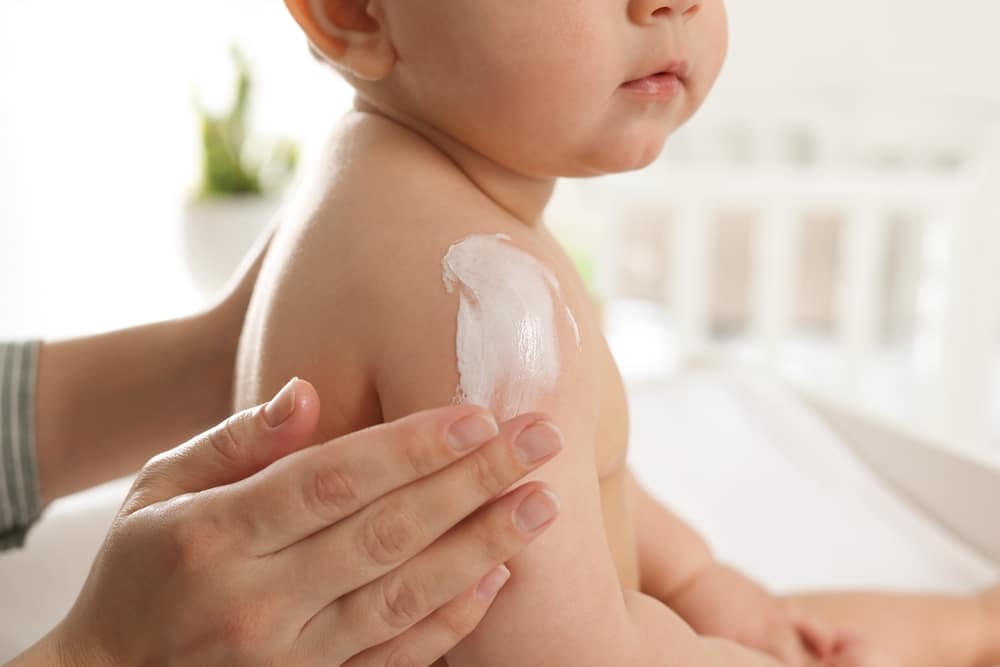Babies are often known for their incredibly soft and cuddly skin. While this is certainly accurate, it’s also important to recognize that their skin can be susceptible to various conditions such as rashes, eczema, and even acne.
“Newborn skin is inherently much more sensitive because it is thinner than adult skin and has lower lipid expression,” explains Sheilagh Maguiness, MD, a pediatric dermatologist. The skin maturation process can extend up to two years, during which Maguiness notes that infants become more susceptible to irritation from various chemicals and ingredients.
As a parent, it’s essential to understand how to manage typical skin issues and reduce exposure to potential irritants, and we are here to assist with both. To support parents in caring for their baby’s skin, Maguiness has addressed some frequently asked questions covering everything from skin flare-ups to sunscreen recommendations and best bath practices.
Common baby skin issues and how to address them
Which skin issues usually clear up on their own or can be managed at home?
- A few common rashes: Erythema toxicum neonatorum and transient pustular melanosis are benign conditions. They typically appear within the first few hours or days after birth and present as hive-like pink bumps or darkened spots accompanied by small pustules. These skin issues generally resolve on their own without any intervention.
- Baby acne: This condition typically manifests between two and three weeks of age, primarily on the head and neck as small pink bumps or pustules with some scaling. It’s important to note that baby acne is not true acne—there are no blackheads and it doesn’t lead to scarring. This reaction is usually linked to malassezia yeast on the skin and tends to be mild. However, if it becomes more widespread or persists beyond two months, consulting your pediatrician is advised as treatments are available.
- Cradle cap: This typically appears as yellowish scaling on the baby’s scalp. Regular bathing and the application of an oil—such as sunflower oil—to moisturize the scales and promote shedding can be beneficial. Although cradle cap usually resolves on its own, if it appears severe, red, or is associated with oozing, it’s important to consult a pediatrician, as it might indicate a bacterial infection or early eczema.
What are signs that you should seek a doctor’s advice for your baby’s skin issues?
If your baby’s rash seems to persist longer than normal, or if you notice signs such as redness, blisters, oozing, or weeping, it’s best to contact your doctor. Additionally, any widespread rash that appears itchy or uncomfortable should also prompt a visit to your healthcare provider.
How can common baby skin issues be treated?
For infants vulnerable to eczema, pediatric dermatologists typically recommend:
1. Regular bathing of infants, ideally daily or every other day, using non-detergent gentle liquid cleansers that are both hypoallergenic and free of fragrances.
2. After bathing, apply a fragrance-free and hypoallergenic lotion thoroughly over the skin.
This method, often referred to as “soak and smear,” serves as an effective way to retain moisture in a baby’s skin, helping to prevent moisture loss.
What is contact dermatitis?
Contact dermatitis refers to the inflammation of a baby’s skin due to irritants or genuine allergens. It presents as red, often scaly, itchy patches. The facial area and diaper region are the most commonly affected by irritant or allergic contact dermatitis in infants. Numerous factors can lead to irritation, including chemicals, preservatives, fragrances, essential oils, and even urine and fecal matter.
Is there a connection between skin problems and food allergies?
Recent advancements over the last five to ten years have greatly improved our understanding of allergic conditions. It appears that a compromised skin barrier is a significant factor contributing to the development of both atopic dermatitis and food allergies in babies. A baby’s skin barrier is crucial—it needs to remain well-hydrated and inflammation-free to perform its functions effectively, keeping out allergens and pathogens. If the barrier is not intact, it may allow these substances to enter.
When an infant’s skin barrier is impaired, they can become sensitized to food allergens through their skin, potentially increasing the likelihood of developing food allergies. Parents are encouraged to consult with their pediatrician about the recommended early introduction of solid foods around four months of age to help mitigate the risk of food allergies.
Baby skincare guidelines
What types of products do you recommend for sensitive skin?
I advocate for simplicity when it comes to baby skin care. Always select products that are gentle, fragrance-free, and hypoallergenic.
For children with dry, sensitive skin prone to eczema, a gentle, fragrance-free laundry detergent is essential. Additionally, I suggest avoiding dryer sheets and fabric softeners for most infants, particularly those with sensitive skin. Cotton clothing is soft and breathable, whereas synthetic fabrics and wool can cause overheating or increased friction, leading to discomfort.
Skincare ingredients to avoid for babies with sensitive skin
I firmly believe that fragrance-free products are the safest option. Furthermore, I recommend avoiding sulfates, essential oils, parabens, and alcohols. Regarding baby cleansers, these often contain surfactants, which are the foaming components found in soaps. Some surfactants are mild, while others are harsher. It’s advisable to steer clear of baby washes that list cocamidopropyl betaine as the primary ingredient, as it is a harsher surfactant that may cause dryness or even allergic contact dermatitis.
What should parents prioritize when selecting sunscreen?
There’s a great deal to consider when choosing a sunscreen for infants, and…There are many different types of sunscreen ingredients available, including both chemical and mineral options. For young children, it’s advisable to opt for mineral-based sunscreens that feature active ingredients like zinc oxide or titanium dioxide.
Many spray or aerosol sunscreens are predominantly chemical-based, making them unsuitable for infants. It’s best to choose fragrance-free and hypoallergenic products, as there are plenty of cream, lotion, and stick options that are safe for babies and toddlers.
However, it’s important to remember that sunscreen is only one aspect of sun safety. Protective clothing is crucial as well, so make sure to pack broad-brimmed hats and rash guards for any beach outings. Look for shade and limit exposure during peak UV index hours.
Bath Time Tips
How often should you bathe your baby?
Even for babies with delicate skin, I suggest regular tub baths. Bathing daily or every other day is acceptable, provided you apply a moisturizer all over immediately after bathing to keep the moisture locked in. Keep in mind, a cleanser isn’t necessary for every bath; plain water is perfectly sufficient for cleaning your baby!
Research indicates that regular bathing paired with a hypoallergenic baby moisturizer can mitigate baby eczema symptoms and promote better skin health. This routine also aids in the prevention and treatment of cradle cap and baby acne.
How long should you keep bath time for your baby?
A soak time of five to ten minutes is optimal for a tub bath. To prevent your baby’s skin from drying out post-bath, it is crucial to apply moisturizer all over while the skin is still damp, which helps retain moisture and reduce water loss. Utilizing a gentle, hypoallergenic cleanser or forgoing a cleanser altogether is vital, especially if your baby has particularly dry skin.
How often should you wash your baby’s hair?
Washing your baby’s hair a few times a week is generally sufficient. Nonetheless, do not overlook the scalp during bath time! Wetting the scalp promotes natural shedding and can help avert cradle cap, especially when followed up with a moisturizer like sunflower oil.
When should you apply lotion or diaper rash cream to your baby?
The ideal time to put on a moisturizing cream or ointment is right after bathing. Apply the moisturizer while your baby is still damp to seal in the moisture and diminish water loss from the skin’s surface.
Additionally, it’s advisable to use a diaper barrier cream with each diaper change. I prefer using ointments such as plain petrolatum, although some diaper creams that contain zinc oxide may be beneficial too, as long as they are fragrance-free.
Image Source: New Africa / Shutterstock



































